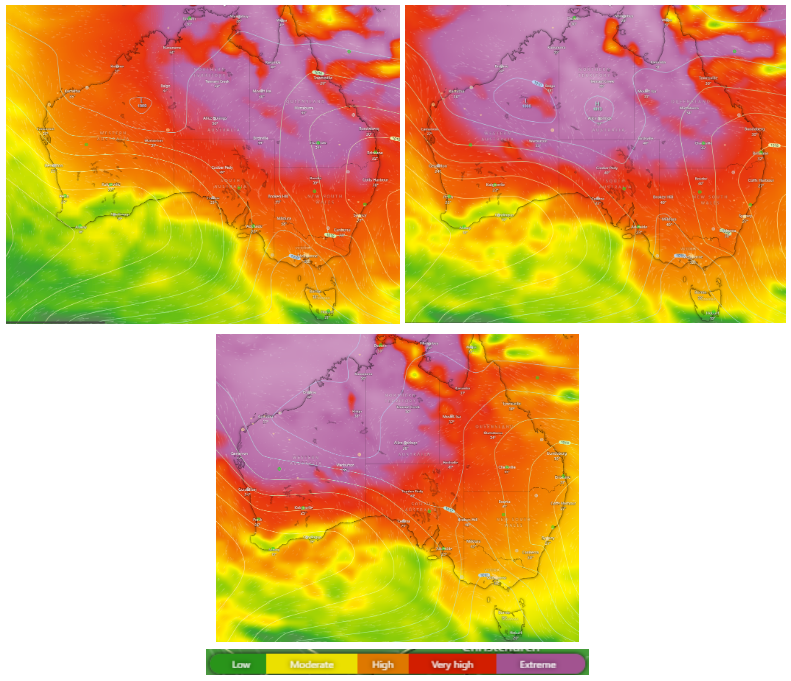How do we know when to slop on the sunscreen?
This weekend is going to be nice and sunny for most of us in Australia, so hitting the beach doesn't seem like a bad idea.
But when we go to check our personal weather apps, we find a high to extreme UV index Australia wide. We know we ought to put on some sun protection, but what does the UV index actually tell us?

Figure 1: the UV index for today, Sat 18th March, from 1:00pm (top left), 2:00pm (top right) and 3:00pm (bottom).
The UV index is a number from 0 to mid-teens which indicates how much harmful UV radiation is reaching the surface at a particular location. It takes into consideration the:
- Type of UV radiation & the amount of each (yes, not all UV rays are bad for our skin. UV-B rays are the bad ones)
- The amount of ozone in the atmosphere at the place and time (in the Southern Hemisphere the ozone hole grows in the spring due to unique chemical reactions at the South Pole, but grows again in summer)
- The declination of the sun (the angle of the sun in the sky changes with the seasons, it is at its highest in late December. The higher the sun, the longer it is in the sky exposing us to radiation)
- The elevation of the location (higher places have "less" atmosphere above them, so they are more likely to be exposed to a greater amount of UV rays as there are less particles to absorb the rays before they hit the surface)
- The amount and type of clouds in the sky (different amounts and types of clouds absorb a different amount of UV rays, reducing the amount that reach the surface)
Combining these factors tells us how safe we will be from UV radiation.
Some of these factors are relatively constant, like the type of UV harmful to us, the elevation of a location and the declination of the sun. But other factors are changing depending on the weather. Things like the size of the ozone hole and cloud cover vary year-by-year, hour-by-hour respectively.
This past summer, though hot, was quite wet, with the nationally averaged rainfall being 26% greater than the average between 1961 and 1990, particularly in the north. With the presence of La Nina, a negative Indian Ocean Dipole phase and a positive Southern Annular Mode phase, precipitation (and cloud cover) was dominant for most of the east coast states, and less so in the southwest, providing higher UV protection in the east.
Further, the ozone hole was smaller this spring than the previous two springs of 2021 and 2020, meaning we had more protection from UV radiation this summer than the past two.
So let us enjoy the sunshine with the consolation that our amazing atmosphere is protecting us. But we ought to do our part of slipping, slapping, slopping, seeking and sliding to help out our handy atmosphere in protecting us.